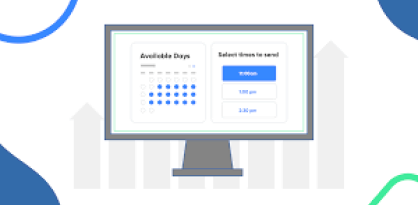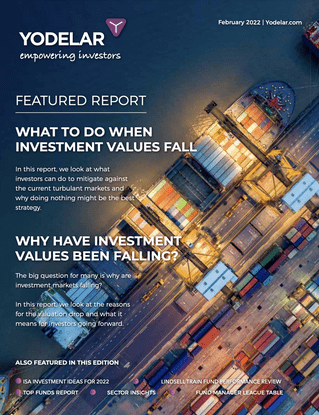- Data from hub.yodelar.com identified that over 90% of portfolios reviewed by Yodelar contain one or more consistently underperforming fund - highlighting widespread performance inefficiencies.
- High total charges and overlapping fund holdings are two of the most common structural weaknesses that quietly reduce long-term returns.
- A fund that underperforms its sector average by just 1% annually can lead to six-figure losses over time in larger portfolios, yet many of these funds remain in place unchallenged.
- Quality advice can add measurable value by ensuring portfolios are regularly reviewed, underperforming funds are replaced, and strategies remain aligned with investor goals.
Not all investment portfolios perform as well as they should—regardless of how diversified or risk-aligned they may appear. While market conditions fluctuate and returns vary, a surprising number of portfolios fall short not due to external factors, but because of internal inefficiencies that often go unnoticed.
This article draws on detailed insights from thousands of portfolio analyses completed by Yodelar to uncover the structural issues that frequently hinder performance. From unnecessary fund duplication and excessive charges to persistently underperforming funds, we identify the factors that can quietly erode value over time.
We also explore what differentiates efficient portfolios - those built with discipline, regularly reviewed, and backed by consistent fund selection - and how quality advice and objective analysis can materially influence outcomes. For investors seeking better clarity and control over their investment strategy, this article highlights the steps that can help improve results and optimise long-term growth.
The Common Pitfalls Behind Portfolio Underperformance
Many portfolios give the impression of being well-structured - diversified across multiple holdings, aligned to a defined risk profile, and delivering steady returns. But a closer examination often reveals underlying inefficiencies that quietly constrain long-term performance. These issues - such as overlapping funds, high charges, or persistent underperformance - can remain hidden without a portfolio analysis, yet their combined impact may significantly weaken portfolio outcomes over time.
Below are 5 common pitfalls behind portfolio underperformance:
-
Fund Overlap
Holding several funds may give the impression of diversification, but in many portfolios, those funds invest in the same underlying assets-particularly large US stocks such as Apple or Microsoft. This duplication reduces genuine diversification and increases exposure to a narrow group of holdings.
-
High Total Charges
When advice fees, platform fees, and fund charges are all combined, overall costs can become substantial. These charges may appear reasonable in isolation, but together they can erode returns, especially if the funds held are not consistently high-performing.
-
Underperforming Fund Selection
Some portfolios continue to hold funds that have consistently underperformed their sector peers over several years. While these funds may still meet regulatory suitability criteria, their contribution to long-term portfolio growth is often limited. In many cases, such holdings persist due to restricted fund access, infrequent reviews, or adviser allegiance to specific providers. Although past performance is not a guarantee of future results, a sustained pattern of underperformance can signal structural weaknesses within the fund. Conversely, funds that have demonstrated consistent top-quartile performance over multiple timeframes may reflect strong underlying processes and effective management - attributes that support ongoing scrutiny and consideration.
-
Concentration Risk
Portfolios can become overly reliant on a single region, sector, or investment style even when they appear diversified. For example, if several funds have a strong US or technology bias, the portfolio becomes exposed to the performance of a small segment of the market, increasing risk if that segment underperforms.
-
Infrequent Portfolio Reviews
Without regular reviews, portfolios can drift away from their intended structure. Underperforming funds go unnoticed, allocations become unbalanced, and costs may remain unchecked. Over time, this leads to a portfolio that no longer reflects the investor's goals or market opportunities.
By identifying and addressing these hidden inefficiencies, investors can bring their portfolios back in line with best practices-improving both structure and performance. A data-led review process is essential for highlighting these issues and supporting better long-term outcomes.
The True Cost of Poor Fund Selection
Many investors underestimate how much damage a few poorly performing funds can do to their long-term returns. On the surface, a portfolio might appear broadly suitable-aligned to risk appetite, spread across regions, and made up of recognisable fund names. But suitability and performance are not the same. A fund can meet basic risk criteria and still consistently deliver returns well below what others in the same sector are achieving.
Poor fund selection is one of the most common inefficiencies identified in portfolio reviews. In many cases, these funds were added years ago and never replaced, or were selected from a restricted list of options that excluded stronger alternatives. Without an effective system for monitoring performance and comparing funds across the market, these weaker performers tend to remain in place-quietly reducing the portfolio's growth potential.
The impact of holding underperforming funds compounds over time. A fund that delivers just 1.5% less per year than stronger alternatives may seem acceptable - but over 10 years, that gap can result in more than £40,000 in missed returns on a £250,000 portfolio. Over 20 years, the shortfall could exceed £130,000.
Source: Yodelar.com - The Hidden Cost of Bad Fund Selection
This performance gap is especially concerning because it is often hidden. Investors might see steady growth and assume their portfolio is working well, without realising how much more it could have delivered. For those approaching retirement or relying on their portfolio to meet future goals, this shortfall can have serious implications.
What makes this issue more notable is that it is avoidable. The tools to evaluate fund performance and make evidence-based comparisons already exist. By tracking a fund's position within sector rankings and reviewing consistency across multiple timeframes, it becomes possible to identify areas for improvement.
Ultimately, poor fund selection doesn't just limit upside - it increases opportunity cost. Every year that an underperforming fund remains in a portfolio is a year where stronger alternatives could have produced better outcomes. Improving fund selection is not about chasing short-term gains, but about favouring consistently strong performers with proven track records.
What Efficient Portfolios Do Differently
Efficient portfolios are not the result of chance. They are built through consistent application of process, analysis, and informed decision-making. While many portfolios meet the basic requirement of suitability, relatively few are structured to perform efficiently over time. The distinction lies in the detail - and in the discipline of how they are constructed and maintained.
They use consistent top-performing funds, not just familiar names:
Efficient portfolios prioritise quality fund selection. Rather than relying on brand recognition or short-term performance, they incorporate funds that typically have consistently outperformed their sector peers across multiple timeframes. This requires access to comparative performance data, benchmarks, and a robust process to identify and replace weaker holdings.
They diversify effectively, not just broadly:
True diversification is not about how many funds are held - it’s about the relationships between them. Efficient portfolios are designed to spread risk across uncorrelated asset classes, sectors, and regions. By avoiding overlap and limiting concentration, they are better positioned to deliver more stable returns across varying market conditions.
They manage costs without compromising quality:
Cost efficiency is a defining feature. Efficient portfolios avoid unnecessary charges and ensure that all fees - across advice, platform, and fund layers - represent fair value. Over time, keeping costs under control helps preserve returns.
They are actively monitored and adjusted:
Efficient portfolios are not static. They are reviewed regularly, benchmarked against performance expectations, and rebalanced as needed. Underperforming funds are replaced, allocations are fine-tuned, and structural drift is corrected - ensuring alignment with both market conditions and investor goals.
They are built with intent:
Rather than relying on outdated advice or passive legacy holdings, efficient portfolios reflect ongoing due diligence and strategic intent. Each component has a clear role, supported by evidence and regularly assessed for relevance.
The result is a portfolio that functions as an integrated, data-led strategy - not just a collection of suitable investments. For investors, that often means stronger performance, better resilience, and more effective use of capital over the long term.
Book A No Obligation Call With A Yodelar Adviser
The Role of Quality Advice in Enhancing Outcomes
The quality of advice investors receive has a direct impact on the long-term efficiency and performance of their portfolios. While many advice processes focus on suitability - ensuring that a portfolio aligns with an investor's risk profile - this alone is not sufficient to optimise returns. Suitability is a regulatory minimum. To enhance outcomes, advice must also incorporate evidence-based fund selection, cost control, and ongoing performance monitoring.
Ongoing oversight is a key area where quality advice adds value. Portfolios should not remain static. They need to be reviewed regularly to ensure allocations remain appropriate, that underperforming funds are identified and replaced, and that charges are assessed in the context of current market options. Without this oversight, portfolios are more likely to drift both in structure and performance - leading to weaker long-term outcomes.
A further consideration is objectivity. Advice that is independent or whole-of-market allows for fund selection without bias towards in-house products or provider relationships. This helps ensure that decisions are made in the client's best interest, using the full breadth of available investment opportunities. Restricted models, by contrast, may limit choice and result in portfolios that are less efficient than those built from a broader universe.
Ultimately, quality advice is not defined by service alone, but by outcomes. It is measurable in the performance of the underlying funds, the clarity of the asset allocation, and the alignment of the portfolio to the investor's evolving objectives. In this context, advice should be viewed not just as guidance, but as a process that materially shapes portfolio results over time.
Understanding the Value of A Portfolio Review
Regular portfolio reviews are essential for investors aiming to ensure their investment strategies remain aligned with their financial goals and risk tolerance. Over time, market dynamics, personal circumstances, and fund performances evolve, potentially leading to inefficiencies within a portfolio. A structured review process can help identify these issues and provide actionable insights for improvement.
Yodelar's portfolio analysis service offers a performance evaluation of an investor's holdings.
Key features of this analysis include:
Fund Performance Assessment: Each fund within the portfolio is analysed over 1, 3, and 5-year periods, comparing its performance to sector peers. This helps determine whether a fund is consistently outperforming, underperforming, or aligning with the sector average.
Sector Ranking and Star Rating: Funds are ranked within their respective sectors and assigned a star rating from 1 to 5, providing a clear indication of their relative performance.
Portfolio Composition Analysis: The review identifies the proportion of the portfolio invested in top-performing versus underperforming funds, offering insights into potential areas of concern.
Comparative Growth Analysis: Investors receive a comparison of their portfolio's growth against model portfolios constructed with consistently top-performing funds, highlighting potential missed opportunities.
Overall Portfolio Grading: Based on the analysis, the portfolio is assigned an efficiency grade ranging from A (highly efficient) to F (inefficient), summarising its overall performance.
This detailed analysis equips investors with the information needed to make informed decisions about their investment strategies, ensuring their portfolios are optimised for performance and aligned with their financial objectives.
Reassessing Your Portfolio with Greater Clarity
Portfolio underperformance is not always obvious. Many investors assume that if their funds are suitable and markets are rising, there is little cause for concern. But even modest inefficiencies - such as consistently underperforming funds or unnecessary charges - can result in significant lost value over time.
The most effective portfolios are built on discipline, evidence, and review. They are constructed using strong-performing funds, structured for true diversification, and managed with ongoing oversight. These portfolios are not defined by brand names or familiarity, but by outcomes - and those outcomes are measurable.
For investors who want to ensure their portfolios are positioned to deliver stronger long-term results, a portfolio performance review can be an important step toward identifying potential inefficiencies and making informed investment decisions.
By understanding the real drivers of portfolio performance and applying a data-led approach, investors can take meaningful steps to improve results and invest with greater confidence.

















